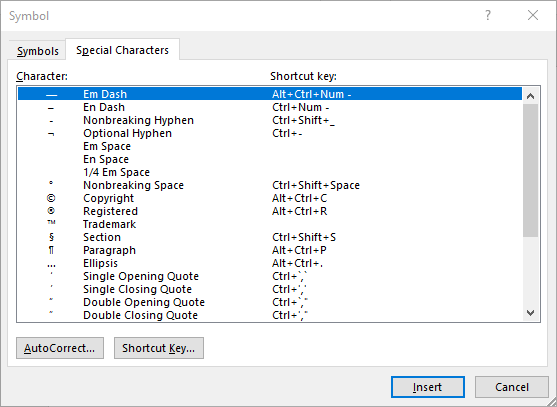
I have been following you for years, and I love your tip, but this is one where I will have to respectfully disagree with you. (Why? Who knows!) Users should be aware of the potential problem and be alert to possible conflicts when creating their own keyboard shortcuts. Some people regard this shortcoming as a bug in Word, but it appears to have been done by design. In fact, the dialog box describes Alt+N as 'unassigned.' This is true of all other Alt commands used by Word, as well.

If you assign Alt+N as a shortcut key, Word does not warn you that Alt+N is reserved for the ribbon tab. For example, Alt+N displays the Insert tab of the ribbon. The reason is that ribbon tabs and commands are accessed from the keyboard with the Alt key. But users should be very wary of using Alt alone. This certainly applies to Alt+Ctrl and Alt+Shift combinations. Users are often advised to use Alt as part of a shortcut key because it is less used by Word's built-in shortcuts. You can even duplicate the way Word uses prefix keys for some international characters. The keys can be any combination of Alt, Ctrl, Shift, and any character that can be entered from the keyboard, including a space. Shortcut keys can be assigned to commands, macros, fonts, building blocks, styles, and some symbols. Word provides a generous supply of built-in keyboard shortcuts (these are described in the on-line Help and in various issues of WordTips) and also allows users to create their own keyboard shortcuts.
#Define shortcut keys for symbols in office 2010 full#
View, Full Screen (Caution: Use the Maximize button to return.Many users, especially when they are first entering text (as opposed to subsequent editing and formatting), prefer to accomplish as many tasks as possible from the keyboard. Excel Legacy Keyboard Commandsįile, Send To, Mail Recipient (for Review)įile, Send To, Mail Recipient (as Attachment)įile, Send To, Online Meeting Participantįile, Send To, Recipient Using Internet Fax Ser vice Table 5.7 lists the legacy keyboard commands and shows which of them continue to work in Excel 2010. Several commands don't make sense in the framework of Excel 2010, so they have been deprecated. If you try a command that no longer works in Excel 2010, nothing happens. Determining Which Commands Work in Legacy Mode

It happens that O is the shortcut on the File menu for Open, so pressing Alt+F+O in Excel 2010 also performs File, Open.įigure 5.7 The Office 2003 access key ToolTip shows which keys you have used so far while entering a legacy shortcut. In Excel 2003, pressing Alt+F+O performs File, Open. Some of the keyboard shortcuts associated with the File menu in Excel 2003 continue to work in Excel 2010. Alt+H takes you to the Home tab instead of the few commands on the Help menu, and Alt+W takes you to the View tab.

None of the keyboard accelerators associated with Window or Help work in Excel 2010. If you are moving from Excel 2003 to Excel 2010, you will have the best success when trying to access commands on the Edit, View, Insert, Format, Tools, and Data menus. The keyboard accelerator commands in Excel 2003 were Alt+F, Alt+E, Alt+V, Alt+I, Alt+O, Alt+T, Alt+D, Alt+W, and Alt+H. In Excel 2003, the main menus were File, Edit, View, Insert, Format, Tools, Data, Window, and Help. If you were an intermediate Excel user who regularly used the Excel 2003 keyboard accelerators but had to look at the screen to use them, you should start using the new keyboard accelerators discussed at the beginning of this chapter. However, there is good news for the power Excel gurus who have favorite Alt shortcut keys burned into their minds-most of them will continue to work as they did in Excel 2003. If you have some of these commands memorized, when you hear that the menu in Excel 2010 is completely gone, you might be worried that you have to relearn all the shortcut keys. If you are a power Excel user, you probably have a few of these commands memorized, such as Alt+E+I+J for Edit, Fill, Justify Alt+E+S+V for Edit, Paste Special, Values and Alt+D+L for Data Validation.

Then you can perform the Justify command by pressing J. Instead of pressing Alt+E+I+J all at once, when the Edit menu is displayed, you can display the Fill flyout menu by pressing I. Figure 5.6 Pressing Alt+E+I+J performs Edit, Fill, Justify.


 0 kommentar(er)
0 kommentar(er)
